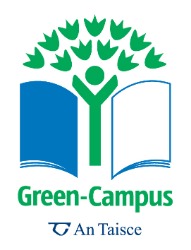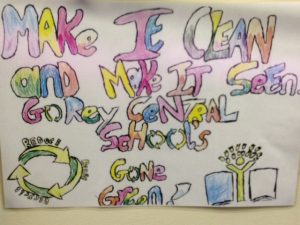
The Green Schools Initiative
Green-Schools, known internationally as Eco-Schools, is an international environmental education programme, environmental management system and award scheme that promotes and acknowledges long-term, whole school action for the environment.
Green-Schools in Ireland is operated and co-ordinated by the Environmental Education Unit of An Taisce (FEE member for Ireland), in partnership with Local Authorities throughout the country, is supported by the Department of Environment, Community and Local Government, the Department of Transport, Tourism and Sport and is sponsored by the Wrigley Company Ltd.
Over 3,800 primary, secondary and special schools in Ireland (>93% of all Irish schools) are currently participating part in the programme and over 2980 schools have been awarded the Green Flag. The Irish Green-Schools programme is one of the most successful within the international network. One of the main factors in the success of the Irish Green-Schools programme is the partnership between the Environmental Education Unit of An Taisce and Local Authorities i.e. the financial and time contribution of the Local Authorities to the programme. Most of the Local Authorities (City & County Councils) have an Environmental Education Officer (EEO). These officers provide the invaluable on the ground support to schools undertaking the programme.
 Green-Schools is a themed and seven-step programme.
The Green-Schools programme for Litter and Waste is based on Seven Steps. These steps are outlined in the chart below. The most important aspect for schools to remember is that every school is different and it is therefore critical that a school fits the seven steps around its circumstances and situation and NOT try and fit the school into the seven steps.
Green-Schools is a themed and seven-step programme.
The Green-Schools programme for Litter and Waste is based on Seven Steps. These steps are outlined in the chart below. The most important aspect for schools to remember is that every school is different and it is therefore critical that a school fits the seven steps around its circumstances and situation and NOT try and fit the school into the seven steps.
Green-Schools Committee
 |
The Green Schools Programme began in Gorey Central School in October 2013 with the establishing of the Green Schools Committee. |
Environmental Review

|
The committee looked at all the things the school are already doing for recycling in the areas of litter and waste, and where they could see room for improvement. This was done in the form of a litter and waste checklist and some surveys of the yard and school bins. |
Action Plan

|
We took the information from the environmental review to generate an action plan which is a list of ideas and things we think we can do in our school to improve the way we reduce litter and waste and recycle more! We have ticked lots of things off! |
Monitoring and Evaluation

|
We had children in the school monitoring the bins in each classroom as well as the litter in the playgrounds on a regular basis. |
Curriculum Work
 |
The teachers in all classrooms are busy integrating the topic of litter and waste into the curriculum topics. For example: in maths by doing bar charts, geography by looking at the environment-how we can care for it and the impact that litter and waste have on our beautiful world, music by doing songs about recycling, Art by creating posters for awareness and using recycled items in some lessons and English by doing poems and stories on the topic of Litter and Waste. |
Informing and Involving

|
This stage is spreading the Green Schools message throughout the whole school and wider community.
|
Green Code
 |
Gorey Central School’s Green Code is: ‘Make it Clean and make it seen,Gorey Central School’s gone Green!’
|

